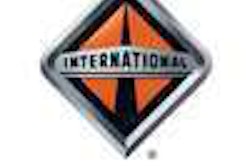Circadian, a provider of 24/7 work-force performance and safety solutions for businesses that operate around the clock, has announced a strategic partnership with Sleep Pointe, providers of a sleep apnea management program for the transportation industry. Working together, Circadian and Sleep Pointe say they will provide sleep disorder screening and treatment services to trucking, rail, aviation, oil services and other 24/7 businesses.
Sleep Pointe says it has the unique ability to create a customized program that ultimately provides standardized, uniform sleep apnea solutions for its customers — anytime, anywhere. By using specially equipped trucks and mobile units, delivering temporary clinical setups in hotels and other facilities, and providing more than 50 fixed sites, Sleep Pointe says it has established the first sleep apnea treatment solution tailored specifically to the needs of the transportation industry. Sleep Pointe’s staff has serviced more than 110,000 patients nationwide, using a proprietary sleep screening, diagnostic and compliance system.
“This strategic partnership with Circadian accomplishes our joint mission to improve the health and wellness of employees within companies that operate 24/7,” says Duke Naipohn, chief executive officer of Sleep Pointe. “The value of this shared mission extends beyond the individual health benefits for around-the-clock employees, to the cost efficiency and bottom-line performance of the companies themselves — by reducing the incidence of fatigue-related accidents.”
Circadian says it implements Fatigue Risk Management systems that identify and manage fatigue risk in transportation and other shiftwork industries. “Sleep Pointe’s impressive sleep disorder solution enhances Circadian’s Fatigue Risk Management system and offers significant value to all 24/7 operations,” says Dr. Martin Moore-Ede, Circadian CEO. “When obstructive sleep apnea is effectively treated, companies see a 50 percent reduction in accidents and injuries, and a 70 percent reduction in health care costs in this very expensive group of employees.”








